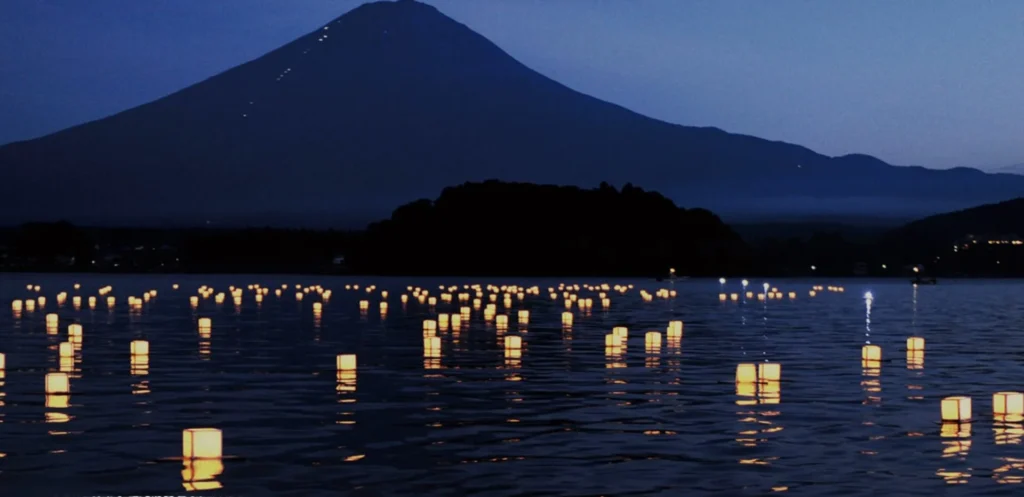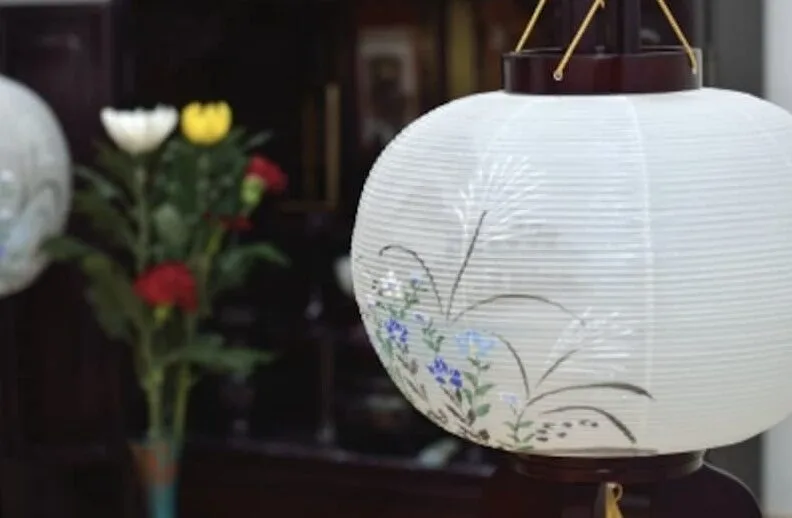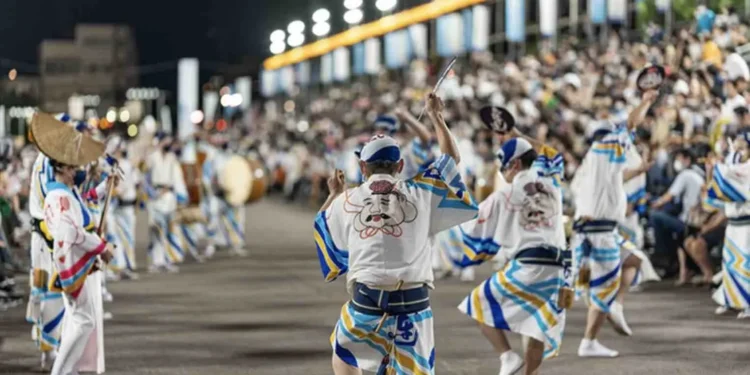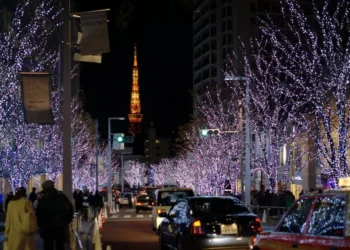No products in the cart.
Obon: Japan’s Summer Festival of Spirits, Family and Tradition
Obon (お盆), is a traditional Japanese festival held in summer to honor and remember the spirits of one’s ancestors. Every summer, families across the country pause their busy lives to welcome the spirits of their ancestors back home, honor their memory, and celebrate the ties that bind generations together. The season is a time of reflection, reunion, and community—rich in rituals, regional customs, and heartfelt meaning.
Obon is a time for families to come together and remember the significance of their ancestors during this festival.
This festival of Obon is a time of year when the hustle and bustle gives way to reflection.
This festival is often associated with “Summer Vacation,” many companies and schools closed for this occasion. It is one of the major holiday periods alongside New Year’s and the busiest travel seasons in Japan; highways, trains, and airports are packed as millions of people journey home. While this festival remains deeply connected to meaningful tradition in Japan, modern life has brought changes such as urbanization, smaller families, and diverse work styles, meaning that not everyone could return to their hometown.

Through the festival of Obon, many people reconnect with their cultural heritage.
Obon traditions vary widely, showcasing the unique practices of each region.
During Obon, communities engage in various activities to honor their ancestors.
Historical Background of Obon
Obon celebrations can differ from one place to another, each with its own charm.
Understanding the timing of Obon can enhance one’s appreciation of the festival.
Throughout Japan, Obon is celebrated with a variety of local customs.
Obon serves as a reminder of the importance of family and community ties.
Many look forward to Obon as a cherished time for family gatherings.
The festival’s roots stretch back over 1,300 years, blending Buddhist beliefs with ancient Japanese ancestor worship. It is based on the Buddhist story of Mokuren (Maudgalyayana), a disciple of the Buddha who sought to save his deceased mother from suffering in the afterlife. The Buddha advised him to make offerings to monks at the end of the rainy season retreat, which brought his mother peace and happiness. Over time, this act of respecting ancestors evolved into the festival, a time to honor and comfort the spirits.
The essence of Obon lies in its ability to draw families closer together.
Obon is marked by rituals that honor the spirits of the departed.
The activities of Obon create lasting memories for families and communities.
During Obon, families share stories and celebrate their heritage.
This tradition was introduced to Japan from China along with Buddhism in the 6th or 7th century. It is rooted in Buddhist, Shinto, and folk beliefs about the afterlife and the importance of honoring one’s ancestors, resulting in a uniquely Japanese tradition. By the Heian period (794–1185), it was already being observed by the imperial court, and by the Edo period (1603–1868), it had become a widespread event among all classes of society.
Obon not only honors ancestors but also strengthens community bonds.
As part of Obon, many engage in meaningful rituals that reflect their culture.
Obon serves as an opportunity for families to remember and reflect.
During Obon, the spirit of togetherness and respect prevails.
During this festival, it is believed that spirits of deceased family members return to the world of the living to visit their relatives. Families prepare to welcome these spirits, offer them food and prayers, and ensure they feel at home. This season provides an opportunity to reflect on the cycle of life and encourages open remembrance and gratitude rather than fearing or avoiding the topic. The fusion of Buddhist teachings and Japan’s native ancestor worship shaped the current form of this festival.

The festival of Obon is a vivid reminder of Japan’s cultural richness.
When is this festival and What is Shin Bon (New Bon) and Kyu Bon (Old Bon)?
When people talk about this occasion, many assume it happens at the same time across Japan. However, the timing could vary depending on the region. Shin Bon (New Bon) is held in July, and Kyu Bon (Old Bon) in August.
Originally, this festival was observed around the 15th day of the 7th month of the Lunar calendar. When the Gregorian calendar was adopted in the Meiji era, the date shifted, and traditional events moved about 30 days later as a result. Some regions decided to align this festival with the new calendar and began observing it in July. This became known as Shin Bon, which is held from July 13th to 16th.
On the other hand, July is the busiest season of the year for agricultural areas such as rice farmers, for example. To avoid the busy time of the farming season, some regions observe it in August instead. It is around the same time as it would have fallen under the old calendar, or Kyu Bon, which takes place from August 13th to 16th.
Today, major regions in Japan follow the Kyu Bon schedule and it is commonly recognized as standard timing for this festival.

Through the lens of Obon, one can explore the depth of Japanese traditions.
11 Key Customs, Traditions and Festivals
So what do people do during this festival? On the first day, people welcome the deceased with five basic offerings such as incense, flowers, candles, water, and food. During the period, offering more elaborate foods like Shojin Ryori (traditional vegetarian cuisine of Buddhist monks in Japan), somen noodles, and fruits would be formal; however, offering the favorite food of the deceased is also common.
There are no strict rules about when to visit graves, but it is said “welcome early and send off late,” so the morning of the 13th is considered to be the best time to welcome ancestors. On the last day, some regions visit graves again to send off the spirits, usually in the evening. Also, fireworks, now a symbol of summer, are said to have originated from events associated with this festival, with fireworks used to light lanterns for the spirits.
There is a variety of rituals and customs, many of which are practiced throughout Japan, while others are unique to specific regions.
1. Mukaebi and Okuribi (Welcoming and Sending-off Fires)
This occasion begins with mukaebi, small welcoming fires lit at the entrance of homes or temples to guide ancestral spirits back. At the end, okuribi (sending-off fires) are lit to help the spirits return to the afterlife. In some regions, people burn bundles of hemp or pine, while others use lanterns or candles. The most famous okuribi is Kyoto’s Gozan no Okuribi, where giant bonfires in the shape of kanji characters are lit on the mountains surrounding the city.
2. Cleaning Graves and Visiting Cemeteries
Before or during this occasion, families visit ancestral graves to clean the tombstones, offer flowers, incense, and food, and pray for their ancestors. This practice, called Ohakamairi, is a central part of the festival and a way to show respect and gratitude.
3. Butsudan and Spirit Altars
Many Japanese homes have a butsudan (Buddhist altar) or a special shelf called a shoryodana, where offerings of food, fruit, sweets, and flowers are placed for the visiting spirits. Some families also display lanterns (bon chochin) to help guide the spirits home.
4. Bon Odori (Bon Dance)
Bon Odori is a lively, communal dance performed at parks, temples, and public squares. Dancers, often dressed in yukata (summer kimono), move in circles around a raised platform (yagura), accompanied by traditional music and taiko drums. The dance is both a joyful celebration and a way to honor the spirits. The style of dancing to the rhythm of taiko drums is believed to have already existed as far back as the Muromachi period. Each region has its own unique style and songs, such as the famous Gujo Odori in Gifu or Awa Odori in Tokushima.
5. Toro Nagashi (Floating Lanterns)
In some areas, people send paper lanterns (toro) down rivers or into the sea to guide the spirits back to the afterlife. The sight of hundreds of glowing lanterns floating on water is both beautiful and moving, symbolizing the journey of the souls.
6. Special Foods, Offerings and Decorations
This occasion is also a time for special foods, both as offerings and for family gatherings. Seasonal fruits, vegetables, and traditional sweets are common. In some regions, people make “spirit horses” (shoryou-uma) from cucumbers and eggplants, using toothpicks or chopsticks for legs, to serve as vehicles for the spirits to visit the family.
This festival is not only a time for quiet reflection and family gatherings—it’s also marked by vibrant regional festivals across Japan. Each area has developed its own unique way of honoring ancestors, blending rituals with lively celebrations. From the fiery mountains of Kyoto to the drum-filled streets of Okinawa, these events offer a powerful glimpse into Japan’s cultural diversity and spiritual traditions. Here are some of the most iconic festivals you can experience around the country.
7. Kyoto: Gozan no Okuribi
On August 16, five giant bonfires are lit on the mountains around Kyoto, each forming a different character or shape. The most famous is the “Dai” (大) character on Daimonji-yama. This spectacular event draws thousands of spectators and is broadcast nationwide.
8. Tokushima: Awa Odori
Awa Odori is one of Japan’s largest and most famous festivals, attracting over a million visitors each year. Dancers parade through the streets in colorful costumes, performing energetic, rhythmic movements to traditional music.
9. Nagasaki: Shoro Nagashi (Spirit Boat Procession)
In Nagasaki, families build elaborate spirit boats (shoro-bune) decorated with lanterns and flowers, which are paraded through the streets and then set afloat or burned to send the spirits off.
10. Okinawa: Eisa Dance
In Okinawa, this festival is celebrated with Eisa, a dynamic drum dance performed by young people in vibrant costumes. The festival, called “Unke,” follows the lunar calendar and is a major event in the region.
11. Hokkaido and Tohoku: Toro Nagashi
In northern Japan, floating lantern ceremonies are especially popular, with rivers and lakes illuminated by hundreds of glowing lanterns.

This Festival in Japanese Culture and the Arts
This occasion has inspired countless works of literature, art, and film. Classic novels, poems, and folk tales often feature it as a time when the boundary between the living and the dead grows thin, and spirits return to visit loved ones. Kaidan stories (Japanese ghost stories) are a popular part of summer, and many stories are set during this festival. It also inspires Japanese arts, from ukiyo-e prints to contemporary photography, capturing the beauty of lanterns, dances, and family gatherings. Additionally, a film by Studio Ghibli’s “Spirited Away” draws on this festival’s imagery and themes of reunion and remembrance.
In conclusion, this festival is a living tradition that weaves together Japan’s spiritual beliefs, family values, and community spirit. Whether through the glow of lanterns, the rhythm of Bon Odori, or the quiet moments at a family grave, it invites everyone to pause, remember, and give thanks. As Japan continues to change, this occasion endures—reminding people of their roots, their loved ones, and the enduring bonds that connect past, present, and future.










